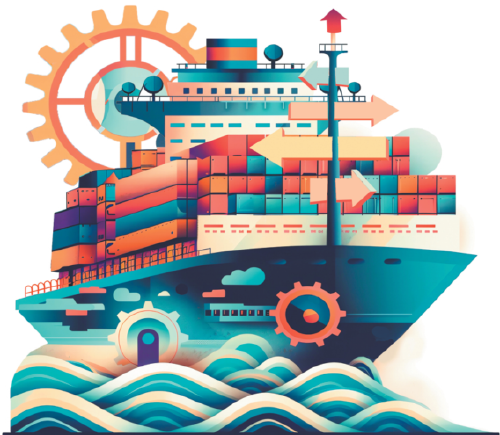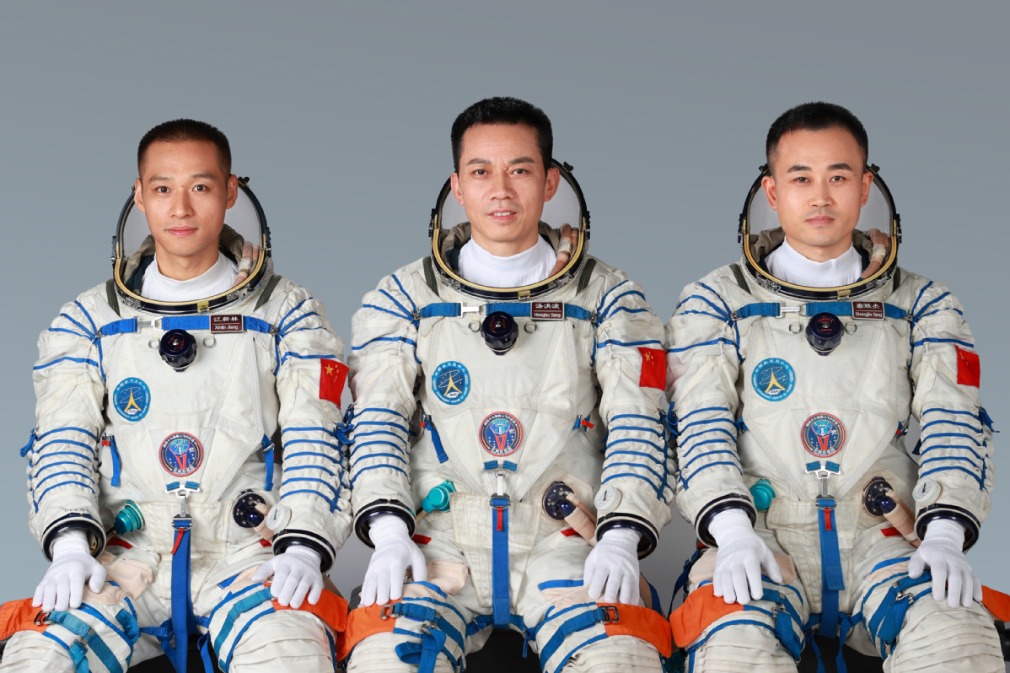Countering 'overcapacity'


US politicians are likely to adopt a tough stance on the trade imbalance with China ahead of the election
During the COVID-19 pandemic, severe inflation in the United States and Western countries necessitated their increased imports from China, leading to their being relatively tolerant about China's growing trade surplus. However, as inflation began to ease, the issue of their trade imbalances with China has resurfaced.
Last summer, US Secretary of Commerce Gina Raimondo singled out China's substantial subsidies for chip investments, which, she argued, led to an oversupply of mature and legacy chips. Similarly, US Secretary of the Treasury Janet Yellen cautioned that "China is too large to export its way to growth, and its economic policy choices have far-reaching consequences". She questioned China's "overcapacity "in the clean energy industry again during her visit to China in April.
China's Government Work Report, released in March, recognizes the economic progress made in 2023 but underscores several challenges, including "overcapacity in some industries "and "China's external environment (has become) more complex, severe, and uncertain".Overcapacity is not a new issue in China. The country grappled with widespread overcapacity back in the late 1990s due to intensified economic transition. However, this old issue has taken on new dimensions, especially against the backdrop of major power competition and the evolving dynamics of geoeconomic relations.
It should be noted that the demand for chips, new energy vehicles and power batteries continues to grow rapidly. Especially, NEVs and batteries and their core components, which belong to technologically-advanced emerging industries, promise even greater potential for future growth. Therefore, assessing whether supply capacity in these industries exceeds demand requires careful consideration of these characteristics.
Unlike the traditional focus of discussions on overcapacity — textile and home appliance industries, for example — the sectors discussed above are characterized by their high technological and capital intensity. These sectors predominantly belong to the mid- and high-end industries, some even within the realm of the emerging and cutting-edge industries, shifting away from low-end supplies. The sectors in the new wave of overcapacity are large in scale, typically involving markets worth hundreds of billions of dollars. The impact of any subsequent adjustments due to overcapacity in these sectors would be profound. Additionally, certain industries, such as automobiles, petrochemical raw materials, and chips, have traditionally been pillars of developed economies with strong international competitiveness. Overcapacity in these industries could provoke more sensitive and complex reactions in these countries than in previous instances.
The surge in investment, triggered by shortages of certain goods during the pandemic, is a distinct cause of the new wave of overcapacity. The pandemic's asymmetric impact on supply and demand led to temporary shortages of some goods in many countries. This was particularly pronounced in the United States and the European Union, where unprecedented macroeconomic policy stimuli inflated demand amid severe inflation, sparking widespread global investment. Data from Statista.com show that the average annual investment in the global semiconductor sector from 2020 to 2023 reached $148 billion, approximately two and a half times the average of $59 billion per year over the previous two decades. The sharp increase in investment has translated into an abnormal growth in capacity. When market demand cannot match such swift growth, it inevitably results in overcapacity.
China's manufacturing sector has seen accelerated upgrades and capacity expansion, highlighting the long-term achievements of China's economic catch-up. However, a combination of factors has led to weak domestic demand growth, resulting in a scenario of "strong supply, weak demand "that hinders the full utilization of domestic capacity. This, coupled with the pandemic-induced surge in external demand, has prompted a swift enlargement of China's trade surplus in industrial goods. In recent years, China has increased its investments in the semiconductor industry. Additionally, significant investments have been made in large-scale chemical projects. Over the past three years, China's average trade surplus in industrial goods has risen to over $1.6 trillion, nearly double the 2010-2019 average of over $860 billion. In the last two years, the trade surplus in industrial goods accounted for more than 30 percent of the total value added of the domestic industry. Strong growth of investment capability in the more advanced sectors and competitiveness in the global market are encouraging achievements, but they may also present a new challenge in keeping a necessary balance between supply and demand.
The new wave of overcapacity is poised to have multifaceted impacts on both the domestic and international economic landscapes. In October 2023, the EU initiated an anti-subsidy investigation into its imports of battery electric vehicles from China. In recent years, the US has increasingly relied on unilateral mechanisms afforded by its domestic laws when initiating trade conflicts. Given that 2024 is an election year, it is likely that US politicians will adopt a tough stance on China to garner votes, focusing particularly on the issues of overcapacity and the trade imbalance.
First, considering the distinct characteristics of the new wave of overcapacity, it is imperative to adopt measures that are synchronized domestically and internationally. After years of development, China's industrial technology and production capabilities have achieved significant milestones, positioning a number of sectors at the global forefront. Yet, there is still a notable disparity compared to major developed nations, and some key sectors exhibit obvious supply shortages. This underscores the necessity to continuously invest in innovation and cultivate new quality productive forces. Meanwhile, attention should also be paid to the balance between supply and demand and the suitability of production capacity in the development of high-tech and emerging industries, and to avoid excessive redundancy of supply capacity or even overcapacity.
Second, it is essential to adopt proactive macroeconomic and structural reform measures to stimulate domestic demand, correct the imbalance characterized by "strong supply and weak demand", and enhance domestic capacity utilization. Deepening reforms to refine and enhance medium- and long-term income distribution policies is crucial. This involves gradually raising the proportion of household income in the national income distribution structure, which will fundamentally increase consumer demand.
Third, securing a fair share of the international market through equitable competition is a fundamental right of Chinese enterprises in an open environment. We need to rightfully oppose protectionist measures implemented by trading partners under the guise of overcapacity. These measures violate international economic and trade norms, and China reserves the right to take reciprocal measures to safeguard the legitimate interests of its enterprises and the development of its domestic industry.
Fourth, the new wave of overcapacity may exacerbate strains on the international economic and trade framework. As an emerging major country, China can play a more proactive role in multilateral economic, trade and financial institutions, as well as the G20, to foster a constructive global response to the new wave of overcapacity. Upholding the international economic and trade rules and order is not only beneficial to the global economy but is particularly advantageous for emerging powers.
The author is a professor of economics at the National School of Development at Peking University. The author contributed this article to China Watch, a think tank powered by China Daily.
The views do not necessarily reflect those of China Daily.
Contact the editor at editor@chinawatch.cn.

































